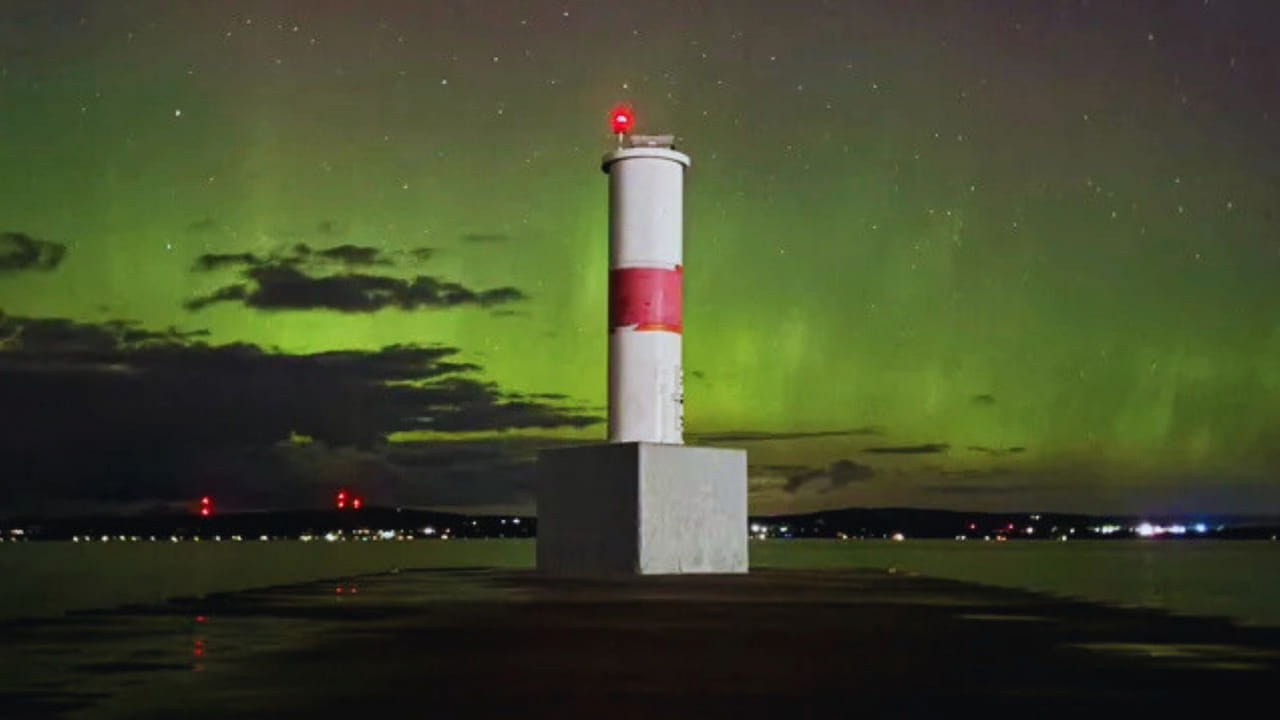Solar Storm to Paint US Skies: Northern Lights Spectacular Coming
A powerful solar blast is racing towards Earth, promising a dazzling light show for many Americans. The sun has fired off a massive burst of energy, and it’s headed our way. This cosmic event is set to create a rare chance for people across the United States to see the northern lights, also known as auroras.
The National Oceanic and Atmospheric Administration (NOAA) tracks this solar outburst and predicts it will hit Earth by midday Thursday, October 12, 2024. This solar storm is so strong that NOAA has issued a rare G4 geomagnetic storm watch. That’s just one step below the most severe level on their five-point scale.
What does this mean for you? If you live in the northern half of the US, you might be in for a treat. The night sky could light up with beautiful colors, visible much further south than usual.
What’s Causing This Light Show?
The sun isn’t just a ball of fire in the sky. It’s an active star that sometimes sends out huge bursts of energy and particles. Scientists call these bursts “coronal mass ejections” or CMEs. When a CME hits Earth’s magnetic field, it can create colorful lights in the sky – the auroras.
This particular CME left the sun on Tuesday. It’s moving fast and should reach us by Thursday afternoon. It will shake up Earth’s magnetic field when it hits, creating the perfect conditions for auroras.
Where Can You See the Northern Lights?
Usually, you’d have to travel to places like Alaska or Norway to see the northern lights. But this storm is so strong that people further south might get a glimpse. NOAA says the lights could be visible across much of the north of the United States.
Here’s where you might be able to see the auroras:
- All of Alaska
- Washington state
- Idaho
- Montana
- North Dakota
- Minnesota
- Michigan
- Wisconsin
But that’s not all. If conditions are right, people as far south as Oklahoma, Arkansas, and North Carolina might glimpse the aurora. It all depends on how strong the storm is when it hits and how clear the skies are.
When to Look
The best time to see the auroras is usually around midnight. But with a strong storm, they might be visible earlier in the evening. Keep an eye on the sky from sundown on Thursday, October 12, into the early hours of Friday, October 13.
NOAA has a helpful aurora forecast tool on its website. It can give you a better idea of when and where to look in your area.
What Will You See?
You’re in for a treat if you’re lucky enough to spot the aurora. The sky might glow with shimmering curtains of green and red light. These lights can dance and move across the sky in waves.
The colors come from the solar particles hitting different gases in Earth’s upper atmosphere. Green is the most common color, but you might also see pink, red, or purple hues.
Tips for Aurora Watching
Want to increase your chances of seeing this rare event? Here are some tips:
- Get away from city lights. The darker your surroundings, the better you’ll be able to see the auroras.
- Find a spot with a clear view of the northern horizon.
- Give your eyes time to adjust to the dark. This can take up to 30 minutes.
- Be patient. Auroras can come and go, so settle in for a while.
- Bring warm clothes and maybe a thermos of hot coffee or cocoa. It might be a long, chilly night of sky-watching.
More Than Just Pretty Lights
While the auroras are beautiful, the solar storm that causes them can have other effects. It might disrupt GPS signals and even cause problems for power grids. But don’t worry—power companies and satellite operators are prepared for events like this.
Why So Many Auroras Lately?
If it seems like we’re hearing about auroras more often, you’re right. The sun goes through cycles of activity, and right now, it’s ramping up towards its peak. NASA expects the sun to reach its most active solar maximum point in 2025.
DurinWeexpect more solar storms and chances to see auroras. So, watch the skies during this time, even if you miss this week’s show. The next few years could bring plenty more opportunities to catch this natural light show.
Remember, seeing the aurora is never guaranteed. But with a storm this strong, it’s worth a look. So bundle up, head outside, and keep your eyes on the northern sky. You might witness one of nature’s most spectacular displays.
Table of Contents
